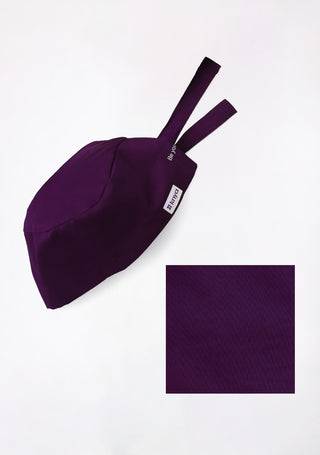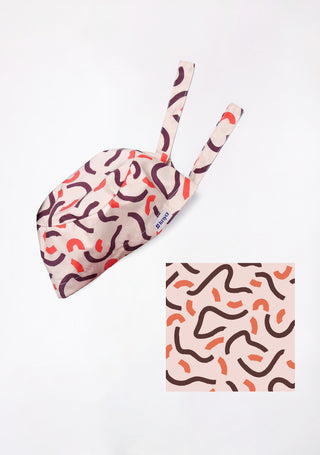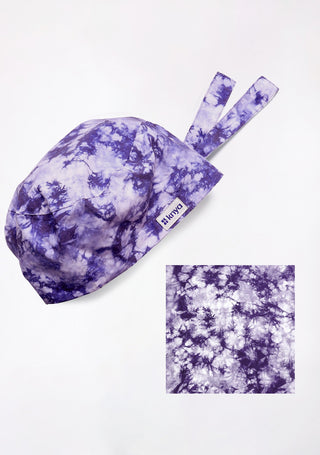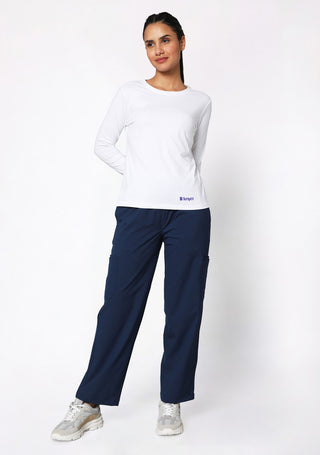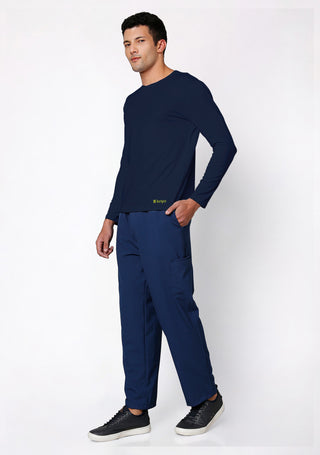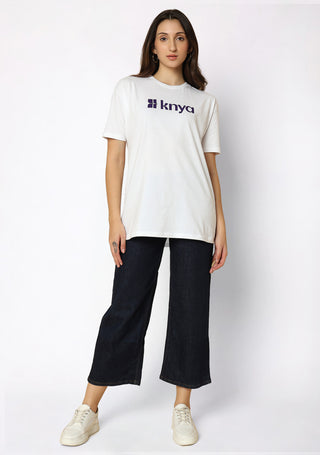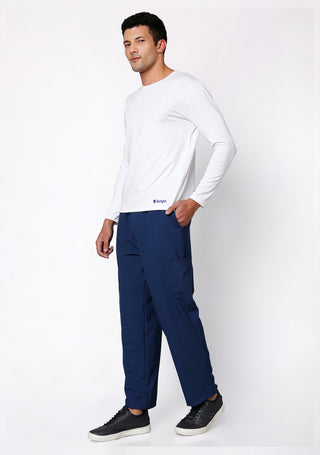The appearance of healthcare professionals plays a key role in building trust with patients. A clean and consistent look shows order, respect, and discipline. Clinics that maintain a uniform style in their caps, coats, and colors present a clear and strong image. It supports teamwork and makes the workplace more structured.
A uniform dress code also helps in separating different roles such as doctors, nurses, and support staff. Patients can easily identify who to approach for care. This also avoids confusion in busy medical settings. Using coats, caps, and matching uniform colors can improve both the clinic environment and the patient experience.
Knya makes clothing and accessories that suit medical needs. The brand focuses on neatness, comfort, and easy wear. Matching styles from head to toe adds value to the clinic’s overall image.
Ready to explore our amazing scrubs collection? Browse the best here
The Role of the Lab Coat
The lab coat has been a trusted part of medical clothing for many years. It shows that the wearer is part of the medical profession. White coats are still common, but other colors like light blue and grey are also seen today in some setups.
Knya offers lab coats that are easy to wear, wash, and maintain. They are made in different sizes and fits for daily use. Full-sleeve, half-sleeve, long, or short styles can be chosen based on job role and department needs.
Caps: Clean Look from the Top
Caps serve many purposes. They help control hair, keep the clinic clean, and give a sharp look. In many clinics, different departments wear different cap colors. This helps identify roles faster. Caps also help maintain hygiene in wards and operation rooms.
Knya caps are made using soft fabric and stay in place throughout long work hours. Caps in matching colors with coats or scrubs improve team unity and make the group look organized.
Colors in Uniforms: What They Show
Colors are not just for design. They also send a message. Each color used in medical clothing can represent a certain mood or idea.
-
White: Known for calmness and cleanliness
-
Blue: Linked with care and calm thinking
-
Green: Related to healing and focus
-
Grey: Neutral and non-distracting
-
Black: Sometimes used by administrative staff
Clinics can choose one or two main colors for their staff uniforms. Knya offers lab coats and caps in neutral tones that blend well with scrubs or accessories.
Creating a Team Identity
Uniforms do more than look neat. When everyone wears the same or coordinated outfits, they feel like part of one team. This builds a team identity.
Team identity can also improve work performance. It reduces dress-related confusion, supports quick role recognition, and creates a sense of pride. Knya offers full sets of coats, caps, and uniform pieces that support team dressing.
Consistency Builds Trust
When a patient sees a clinic team dressed in a clean, uniform way, it gives a sense of order and professionalism. Patients feel confident in the staff's ability to give care. In busy areas like OPDs, labs, and wards, consistency in dress helps reduce stress and confusion for patients.
Knya understands this need and makes coats and caps that match both in style and tone. Clinics can order sets for their team that maintain the same look over time.
Color Coordination Tips for Uniforms and Accessories
Matching colors in medical clothing does not mean making everyone wear the same shade from top to bottom. A small contrast also works if done well.
Basic tips:
- Match lab coats with neutral scrubs (white coat over blue or grey scrubs)
- Use matching caps and masks to finish the uniform
- Keep accessories like belts or ID card straps in the same color group
- Avoid more than two colors in one outfit
- Separate color for interns, seniors, and staff for clarity
- Use soft tones that do not disturb patients
Knya products follow these patterns and offer simple yet matching options for team dressing.
We believe you deserve the best. Shop our amazing selection of lab coats right here
Uniform Guidelines for Different Roles
Uniforms can be set by job title. Some common groupings include:
-
Doctors: White or grey coats, light blue caps
-
Nurses: Blue or green scrubs, matching caps
-
Support Staff: Grey scrubs with simple caps
-
Interns: Short white coats to show training stage
Knya makes lab coats and caps that match all these needs. Sizing is also available in both regular and slim fits.
Easy Uniform Maintenance
All clothing in a clinic must be easy to wash and wear again. Long hours and repeated use require strong fabric. Knya coats and caps are made from material that holds its shape after washing. They do not shrink or fade quickly.
The fabric also allows air to pass, which reduces sweating. This makes the day less tiring for the wearer.
Uniform Storage and Replacement
A good practice is to have at least two sets of uniforms per staff member. This ensures one is always ready if the other is in wash. Uniforms should be stored in dry and clean spaces. Coats or caps that are torn, stained, or faded should be replaced without delay.
Knya offers coat packs that clinics can buy in bulk for storage and staff needs.
Conclusion
Uniforms in healthcare settings do more than just cover the body. They help form a system. Caps, coats, and color selection together give shape to a strong and reliable team. Patients also feel more at ease when the medical team looks clean, neat, and organized.
Matching coats and caps build trust. Fixed dress codes help in team bonding. Right colors remove confusion. With the right products from Knya, any clinic can build a uniform style that shows unity and care.
Team image matters in healthcare. Knya provides smart solutions to support that image. With coats, caps, and consistent color choices, clinics can improve trust, structure, and overall experience.

